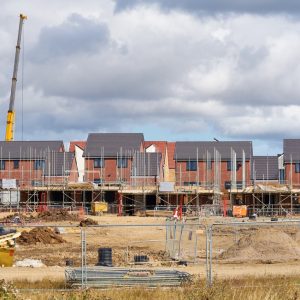
Research from Sirius Property Finance analysed figures from the Ministry of Housing Communities and Local Government showing that there is 36,700 hectare of brownfield land in England.
This could deliver more than 1.3m homes, more than eight times the amount promised last week in the Budget by Chancellor of the Exchequer Rishi Sunak, where he confirmed that the government would invest £1.8bn to deliver 160,000 new homes on brownfield sites.
The potential value of homes across England from building on these sites could be worth £487bn in total.
The research added that the South East has the most brownfield space, which could deliver 210,052 homes with a potential value of £92.5bn.
This is followed by the East of England with 186,100 homes with a potential value of £78.5bn and the North West with 179,071 homes with a possible value of £50.1bn.
The research noted that while London was mid-table in terms of the number of homes delivered with 129,816 homes, the potential value was highly significant at £69.3bn.
Managing director of Sirius Property Finance, Nicholas Christofi, said: “Brownfield development can be beneficial to the environment, help preserve the countryside and green belt, regenerate communities and eradicate eyesores and health hazards, all while coming at a cheaper purchasing price.”
Challenges of developing brownfield sites
However, there are challenges to developing brownfield sites including contamination and vacant land being home to wildlife which can cause delays, according to Christofi.
He said: “Bringing the initial plot up to standard so that you are ready to build can add time and money to development but, with prior planning, these shouldn’t act as a deterrent and are hurdles that can be fairly easily overcome.
“As long as any prior issues are identified and properly rectified there is no reason a lender should view brownfield development any less favourably when looking to secure a self-build mortgage application.”
He said that the key factor would be the assessment from the valuer and if the site was suitable for residential development “no issues should arise”.
This was echoed by John Charcol’s mortgage technical manager, Nicholas Mendes, who said that brownfield sites were often vacant, derelict, contaminated or partially occupied or utilised and that contaminated land could be especially “problematic and costly”.
He said: “From a lender’s perspective there is still a hesitation when assessing this type of development. These consist of the adverse impact on the value of the property due to environmental condition, liability falling on the lender and the borrower’s ability to repay the loan if any environmental liabilities were to arise.”
“In defence of lenders, this is a complicated process and there are potentially many legal hurdles when you consider acquiring, cleaning and the uncertain costs and timetable, and the access to capital to mitigate these areas from the borrower.”
He said that lenders would be reluctant to lend unless remedial work was complete, and most of this funding would be done by commercial and specialist lenders, but this would depend on the borrower, area and development proposal.
Mendes added: “Brokers need to explore and work with lenders to understand their appetite for lending on brownfield sites, understanding how these are assessed, experience of the developer required, potential impacts to site, such as requirements for environmental completion to be certified.”
Christofi added that the potential of brownfields for the mortgage industry was “huge”, and the wealth of brownfield land could “unlock a great deal of business” for those willing to look beyond the brownfield label and provide funding.
He said: “As with developers themselves, lenders may be wary but any specialist lender worth their salt will find a solution that works for all parties, regardless of the project at hand. Our job is to ensure that as we start to build on Britain’s brownfield, the funding is there to facilitate this transformation.”
Government brownfield target ‘not enough’
Although there are challenges to developing, the use of brownfield sites will be vital in addressing the ongoing housing shortage.
Mendes said: “With the growing demand for housing and making more homes accessible for everyone, there needs to be focus on the different areas which can help to make these opportunities happen.
“With the ever-green focus and environment impact, lack of available free spaces, brownfield sites are the ideal way to allow development whilst preserving the countryside. With more home being built this will help the mortgage industry to provide advice to these clients to secure loans on the homes.”
He added that the government acknowledgement of brownfield sites was a “start”, but it was “not enough”.
He said: “With the potential to develop brownfield sites to exceed current planed targets more needs to be done to raise awareness of the pitfalls for developers and support to help these opportunities in front of us.”
Christofi added: “With the government announcing what is essentially a toe-dip into brownfield regeneration, it should act as a good platform to iron out any concerns within the industry so that we can push on and make a meaningful change to the wealth of undeveloped brownfield that exists across the nation.”












